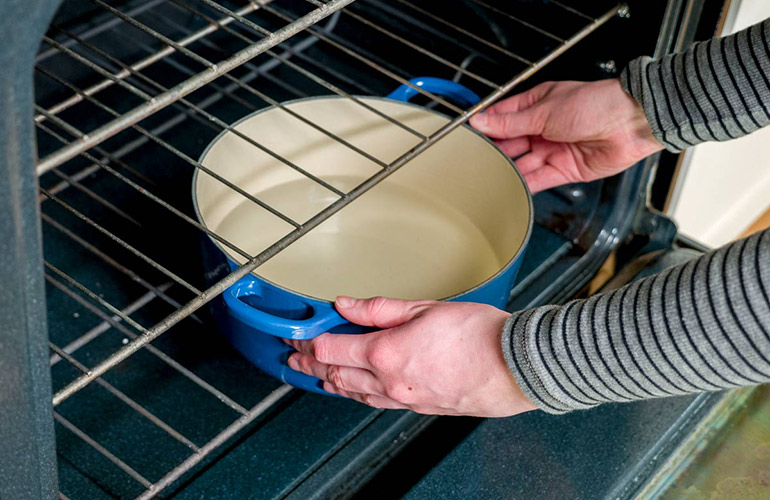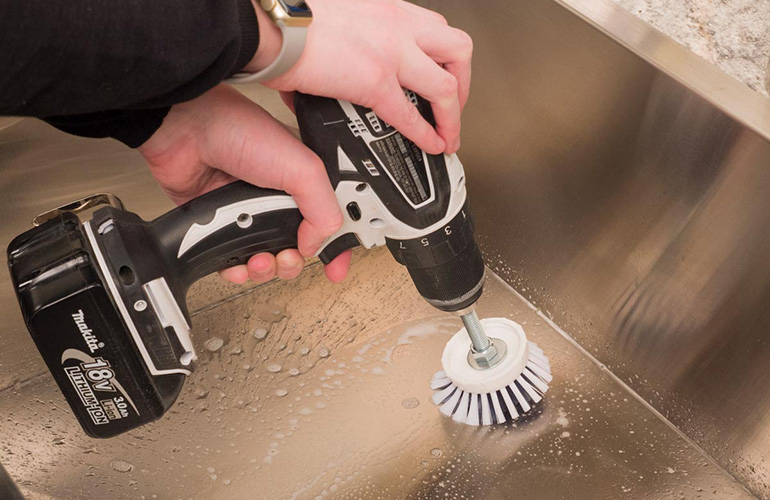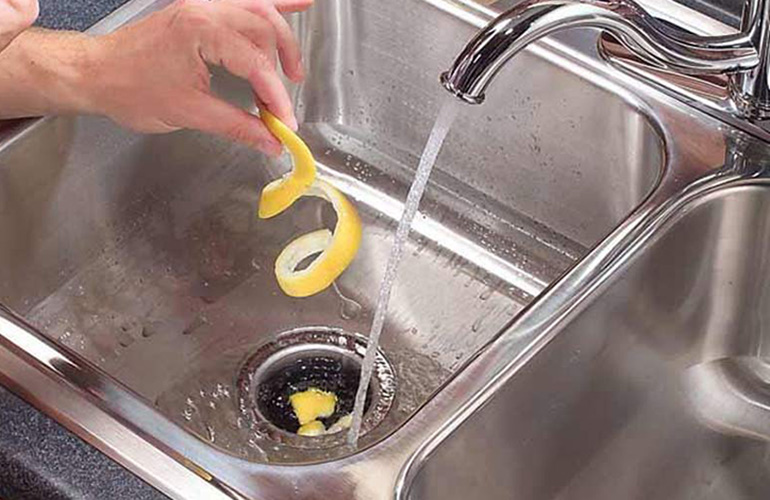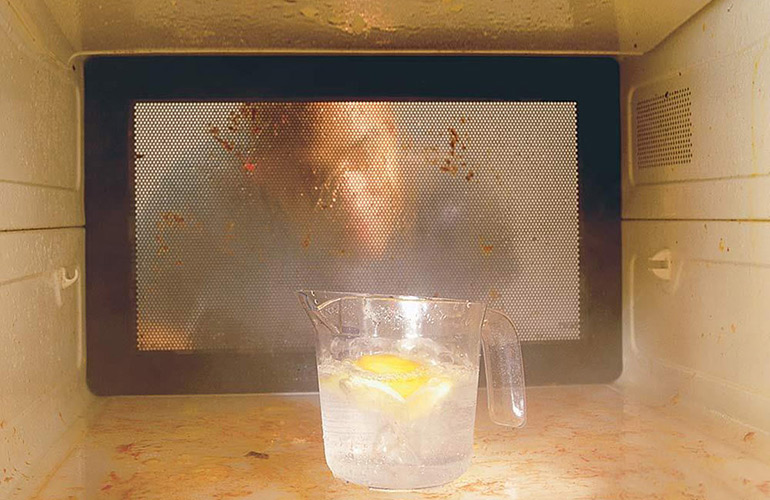Steam for everyday spills

The advantages of traditional oven cleaners are power and speed. But for many of us, the disadvantages outweigh the good, specifically, the corrosive chemicals and caustic fumes that this type of oven cleaning can produce.
A simple, more natural way to clean your oven is to place an oven-safe pot or bowl filled with water inside. Set your oven to 230 degrees for 20 to 60 minutes to loosen dirt and grease with the steam. Once your oven is cool, wipe off the condensation and the grease will come with it. If stubborn spots persist, scrub with a paste of baking soda and lemon or vinegar. This steam-cleaning option doesn’t take as long as pyrolytic cleaning and doesn’t produce smoke, either. It’s a win-win! Check out these 11 chemical-free ways to clean your home.
Paint stick to clean lint build-up

Even if you empty your dryer’s lint trap before each load, chances are there is still lint build-up around the area that could potentially cause a fire. (Here are 20 things that could be a potential fire hazard that you need to know.) So it’s important to deep clean the area once in a while, and this handy hint will get the job done.
Wrap a clean rag around one end of a paint stir stick. Remove the lint trap and clean out the area with the rag-covered stick. To help the lint stick to the rag, dampen it with water first.
The drill brush

Start by threading the machine screw through the brush head so the head of the screw rests in the brush head hole. On the other side of the brush head, slide on the washer and secure it in place with a nut. Make sure to tighten it well with a wrench. However, do not over-tighten, as this may cause the plastic brush head to crack. Next, attach the scrubber head to the drill.
To clean, fill a bowl or bucket with hot water and dish soap (or the cleaning agent of your choice). Dip the power scrubber into the mixture just enough to saturate the bristles and do not submerge the drill! Now simply point and press the drill to start and let the drill brush do the work.








